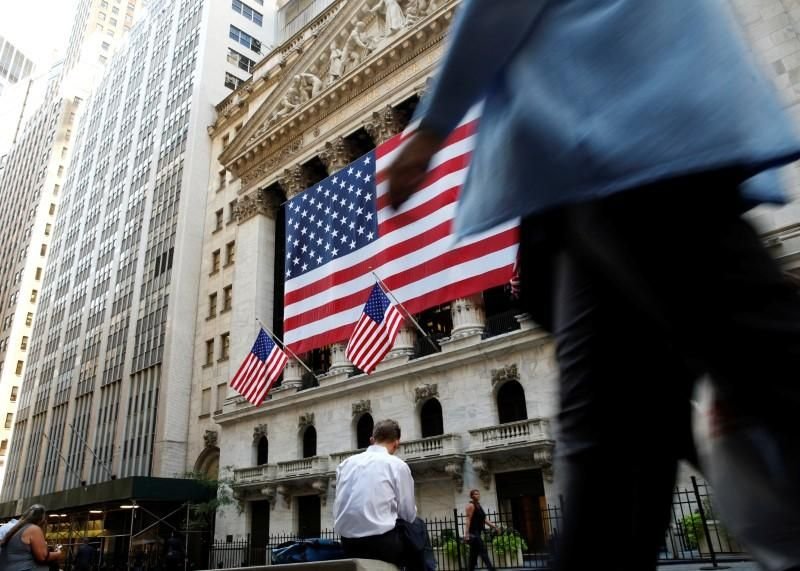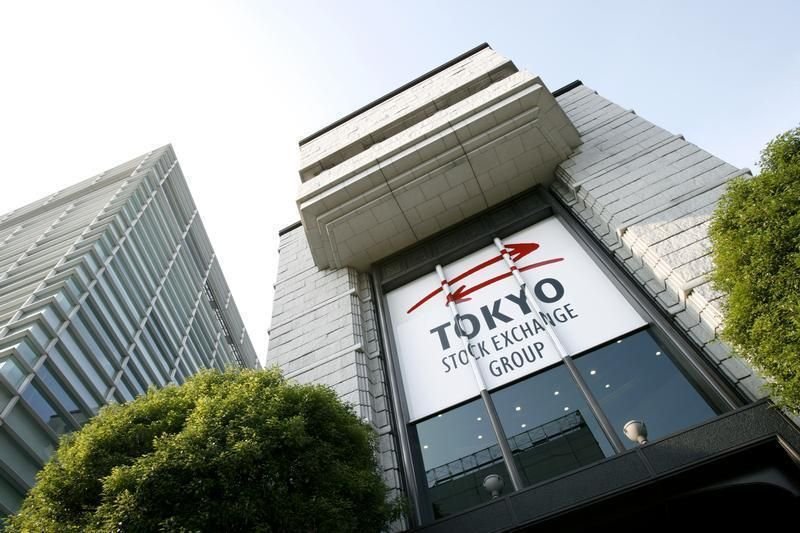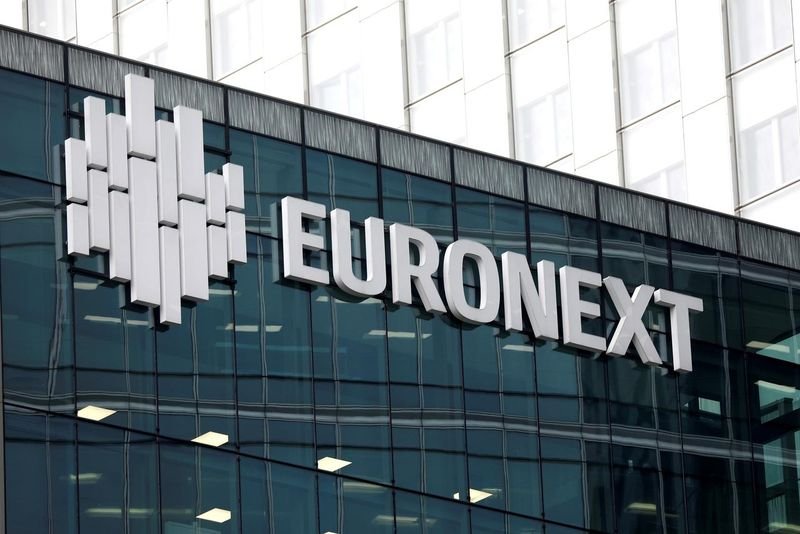What are you doing, when your body temperature rises? Immediately contact a doctor, take a medicine, or still reach for a thermometer to understand what numbers are there and whether you should already take an antipyretic, or for the time being to be good with an extra glass of water and open a window for airing?
The same thing goes for the stock market. In order to understand what response measures to use, which way the market moves in general, a low or a high “temperature” on the stock exchange is, we need certain indicators, which will help orient ourselves.
That kind of a guideline for Forex market are indices or stock indicators. Every developed country has a national stock index. It is DAX in Germany, CAC 40 in France, FTSE-100 in the UK, Nikkei in Japan, Hang Seng in Hong Kong, Dow Jones in the USA, etc. Where do they come from, what do they mean and why they are needed, let's try to figure it out.

A stock index is an average indicator of changes in shares value, and in order to obtain a general picture of the stock state and bond market are used indices.
There should be noted the main groups of stock indices: European, American, Asian-Pacific and Russian.
The indices can be divided into sector and composite ones, where the former are necessary for calculating certain sectors of the economy, and the latter are as indicator of the economic state so a tool for forecasting of the economy development at the industrial, regional and global levels.
From the point of view of economic analysis, it is important to assess the dynamics of stock index values over time. The data on the development of index values make it possible to assess the situation and make a forecast for the further movement of the market, both at the local and global levels. The large investors need these data to choose a right investment strategy. Participants in the stock market can find these data in news agencies, consulting companies, on exchanges, and brokerage office.
Stock indices can also be divided into price-weighted and cap-weighted indexes.
Price-weighted indices depend on all the securities included in the index value calculation base and are calculated, as a rule, as arithmetical average of companies’ shares overall value. The well-known Dow Jones index, Nikkei-225 index, AMEX, and others refer to this type of indices.
As a basis for the market-capitalization weighted indexes calculation is taken the overall enterprises capitalization of this group for a certain period of time. This type of indices includes: S&P 500, the composite index of the New York Stock Exchange, etc.
Let’s consider the main indices in more detail, regardless of the type each belongs to.
Wall Street or U.S. indexes
Dow Jones Industrial Average (DJIA)
The world-famous stock market index is Dow Jones, named in honour of its creator, Charles, Henry Dow, who back in 1884 published the first stock exchange data for 11 companies, 2 of which were industrial, and the rest 9 - railway. The Dow Jones was calculated for industrial companies on a regular basis from 1896. As before, the index reflects the dynamics of prices for bonds and stocks of 30 leading U.S. stock companies.
Now Dow accommodates not only industrial companies, but also the financial branch, IT, services, etc. So, at the moment, the size of the Dow Jones indicator depends directly on the value of the shares of all 30 companies for a certain period of time. Why was the term “indicator” mentioned? It's simple, the name itself speaks for itself. The Dow Jones Industrial Average is the mean value, which reflects the index state. Its minimum for the last 5 years, the index marked in September 2015 - 16,284.70, while the Dow’s peak for the same period was in September 2018 - 26,548.31 points.
S & P 500 index (SPX)
The Standard & Poor’s Index, better known as S & P, is calculated by a rating agency of the same name, not directly related to any of the exchanges, but responsible for business performance indicators calculation and assignment to companies and various institutions, including government, credit ratings in terms of reliability.
The value of the index is usually determined by the weighted average calculation of stock prices divided by the coefficient taken as the base value. The S & P index is called very often the barometer of the U.S. economy.
The S & P index with a number of 500 indicates the number of U.S. stock companies, which are included in this index, for the first time the Standard & Poor's 500 was published in 1957. The maximum and minimum of the index hit targets on April 2014 and September 2018, namely 1,883.95 and 2,913.98 points, respectively.
NASDAQ Composite Index (IXIC)
Nasdaq Index is a composite index, which reflects data on the technological sector shares. This stock index includes more than 3,200 companies, both American and foreign.
The stock price of any company listed on the Nasdaq index affects it in proportion to its market price. For example, if in 1971 the level of the index was 100 points, now this figure is above 7,600 points. The lowest level of the index for 5 years was recorded in April 2014 - 4,114.56 points, and the highest result, equal to 8,109.54 points - in August 2018.
Asian indices
In the Asia-Pacific region, several of the most well-known indices can be distinguished, for example: Nikkei, Shanghai, Hang Seng, Kospi, etc.
The main stock index of Japan is Nikkei 225 (NIK), where the number as you know now indicates how many companies are included in the listing. The index is calculated by the same way as the Dow Jones, by arithmetic average of the shares of all 225 companies that are most actively traded on the stock exchange in Tokyo. Listing, i.e. the list of companies listed on a particular stock exchange is revised annually. The Japanese main index first appeared at auction in September 1950. Nikkei marked its minimum for the last 35 years in 2009, in February - 7,568.42, and the maximum, equal to 38,916.00 points - in December 1989.
The Hang Seng (HSI) - Hong Kong Stock Exchange index holds the share values of 34 major local companies, including such industries as manufacturing, land ownership, trade, finance and utilities. The initial value of the index in 1964 was only 100 points, and now we are talking about a mark of more than 29,000 points. In the 5-year dynamics of the index, it is impossible not to note its minimum value equal to just 19,111.93, while the peak fell in January of last year and amounted to 32,887.27 points.
The Shanghai Stock Exchange Composite (SSE) is the index of the Shanghai Stock Exchange. The daily value of the index is calculated on the basis of weighted data on the shares capitalization in quotation lists A and B. And if, according to data for 1990, the index was equal to the initial 100 points, now it is more than 3000. The lowest number of points since 2014 was noted in the same year and was 2,026.36, and the highest figure reached 4,611.74 in May 2015.
South Korea's stock index - Kospi (SEU)- holds more than 750 companies from various industries, including metallurgy, finance, energy, IT, automotive, trade, construction. Since the appearance of the index in 1983, the base 100 points have become over 2,000 today. The historical minimum for the last 5 years was 1,912.06 points at the beginning of 2016, and the maximum was 2,566.46 in January 2018.
European indices
The most famous indices of the European region are FTSE 100, FTSE MIB, CAC 40, DAX Index.
Let's start with the last one, the DAX Index - Deutscher Aktienindex - the most important index related to the Frankfurt Stock Exchange in Germany is calculated by average-weighted number for the capitalization of the 30 largest German joint-stock companies and namely their shares value. In October 2014 the index reached its minimum in 5 years - 9,326.87, while the maximum level was 13,229.57 in October 2017.
It should be noted that the calculation is based only on those shares, which are in free circulation. Moreover, such data as yield on shares is always taken into consideration, to reflect the information concise and to the point, we can say the following, that the index is a mirror image of capital gain. When the index appeared in 1987, its initial value was 1000 points, and now it is more than 11,300 points.
In France, the main indicator of stock movements is the CAC 40 Index (Continuous Assisted Quotation). The basis for index calculating is the average-weighted stock price by capitalization for the 40 largest companies trading on the stock exchange of the France’s capital. In the calculating of this financial indicator participate the Society of French exchanges and the Paris Stock Exchange. The CAC 40 Index appeared in 1987, the initial value was a quantity of 1,000 points. Now the index has more than 5,000 points. As for the maximum and minimum values registered over the last five years, we are talking about 5,520.50 points in the April of last year and 4,233.09 points in October 2014, respectively.
FTSE MIB - refers to the Italian Stock Exchange and combines the shares of Italy’s main 40 giants, whose shares are traded on the stock exchange of this country, including financial companies, local auto industry, etc.
FTSE MIB index was first used in 2003. Initially, the index was calculated by S & P (Standard & Poor) methodology, but since 2009, the British FTSE calculation is in effect, which sounds in the title itself. The shares’ value is expressed in euros or pounds. Over the past 5 years, the lowest value of the index was noted on June 1, 2016 - 16,197.78 points, and the peak was registered on April 1, 2018 - 23,979.67.
Among the European indices, the most influential is still the British, or the UK index, which is calculated by the Financial Time agency on the basis of 100 companies and is called the FTSE 100 (Financial Times Exchange Index), also called Footsie. In its listing a special commission selects companies candidates, whose capitalization slightly equals to 80 percent of the total market capitalization. Companies shares related to the UK’s index under the terms of FTSE Group should be highly liquid and in free circulation.
The index appeared in 1984, and if at the start the indicator gained 1,000 points, now this number is equal to 7, 177. The lowest border for 5 years was the number of 6,061.61 points in September 2015, and the maximum number - 7,748.76 - in July last year.
So, if to summarize, stock indexes are used mainly for the sake of technical and fundamental analysis of the market state, forecasting its dynamics, and also as a base for derivatives trading, which are based on these indices. But this is a topic for a separate article!
Photo: Reuters, Pexels


